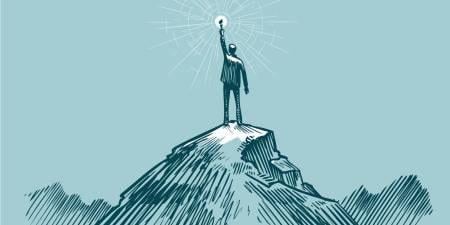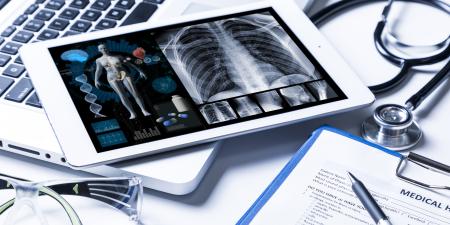It has been said that the death of one person is a tragedy whereas the death of a million is a statistic. Putting a single human face on suffering inevitably makes it more real and compelling. For instance, the Baby Jessica story in 1987 had an entire nation and world glued to television sets to watch the rescue of the little girl in the West Texas well. More recently, the story of Dr. Jerri Nielsen, the South Pole physician who treated her own breast cancer with the assistance of telemedicine technologies, created enormous media interest. Yet the AIDS epidemic which has killed untold numbers of Africans and affects an estimated 1 in 20 in large portions of sub-Saharan Africa, has only recently stirred much media interest here in the US, generating, at long last, a recent Time cover story.
Dr. Nielsen's story contains all the elements of a compelling drama: a sacrificing physician in the remote environs of the South Pole, supportive and caring colleagues, technology that enabled health care professionals in the US to treat the doctor's breast cancer, and a daring rescue by US Air Force pilots who whisked Dr. Nielsen away from the bitter cold of the Pole to treatment in the US.
Even before her experience with cancer, Dr. Nielsen's story was dramatic. Leaving behind the remains of a bitter divorce and estranged from her children, Dr. Nielsen fled to the South Pole to confront new challenges. After reading an ad by the National Science Foundation for a physician To join a research team at the South Pole, "I felt a prickling sensation up and down my skin," she recalls in her new book Ice Bound: A Doctor's Incredible Battle for Survival at the South Pole, "like the kind of physical excitement a child feels at the sight of a bicycle under the Christmas tree . . . . I believe in geographic cures - they allow you to throw all your cards in the air and see where they land . . . then pick them back up and deal them again." Facing grim weather, lack of sunlight, and primitive surroundings, Dr. Nielsen served as the resident physician for the other "polies" with whom she worked. By March of 1999, however, when the South Pole station had already been closed off from the rest of the world for the next several months, Dr. Nielsen made a frightening discovery: a 5½-cm lump in her breast. E-mails were exchanged. Physician colleagues in the US knew that they needed to examine a biopsy. But who would perform the biopsy? Fate produced an unlikely "surgeon;" one of her colleagues, a welder, practiced on various fruits and vegetables before performing the needed biopsy on Dr. Nielsen, under her guidance.
The availability of telemedicine technologies opened up precious opportunities for Dr. Nielsen and her colleagues to treat her incipient breast cancer. She credits one of her fellow "polies" for setting up the necessary equipment to transmit information regarding her case: "We sent samples twice, because the first samples were stained with antiquated stains left over from the Navy and they didn't work. The telemedicine system was developed at the Pole by my girlfriend Lisa. She used equipment we had on hand, a camera, a microscope, and a computer, and rigged up a system to use the Internet to transmit the pictures. (She's pretty smart!)1"
It soon became obvious that even with an electronic connection to an oncologist in the United States, Dr. Nielsen did not have the supplies necessary to treat herself. Air-dropped chemotherapy drugs, while they brought hope, did not change the growing consensus that the physician-turned-patient needed to leave the station. In addition to her physiological responses to her disease, a frightened Dr. Nielsen was losing her strength, memory, and morale as a result of the treatment and the atmospheric conditions.
There is no question that the availability and use of sophisticated computer technology helped save Dr. Nielsen's life. Hardware, though, is not enough. Without a technologically savvy colleague, an on-site physician - Dr. Nielson herself - and the willingness of her team members to train and cooperate in unfamiliar care-giving, the South Pole rescue story would have been far less satisfactory.
Even after the successful biopsy and some chemotherapy, Dr Nielsen needed to be evacuated from the South Pole - an undertaking that proved very ambitious, since weather conditions at that time of the year almost preclude the descent and landing of an aircraft - and cost a significant amount of money. Again, we confront the limits of technology and its many possibilities. The heroic efforts put forth to save Dr. Nielson lead us to reconsider the Baby Jessica phenomenon and the wealth of human, financial, and technological resources we are willing to mobilize once we put a human face on suffering.



